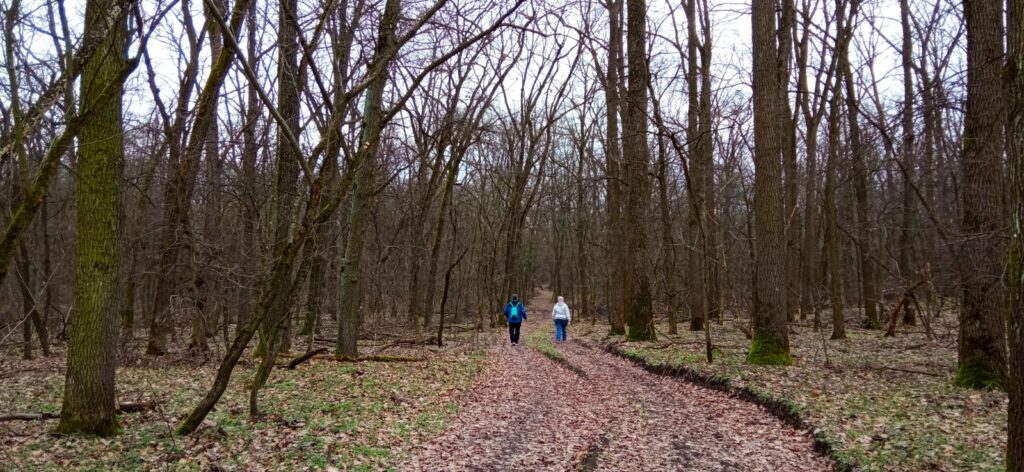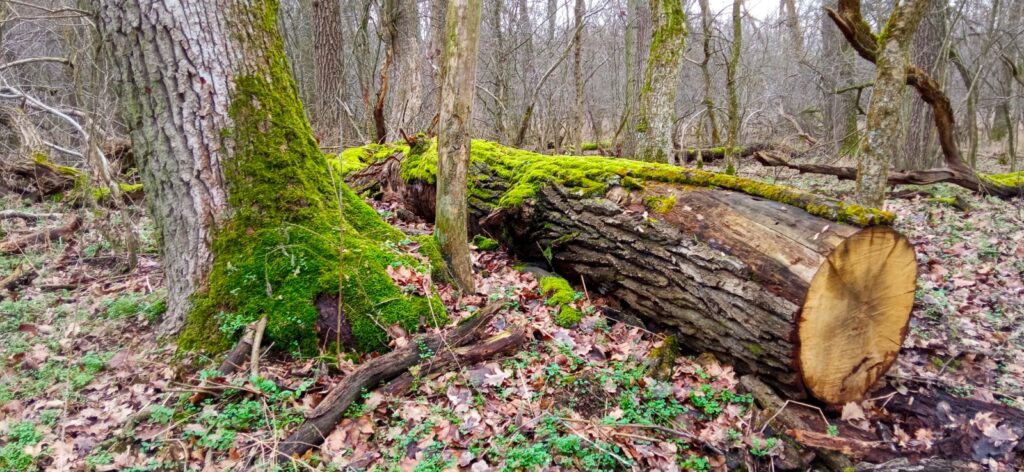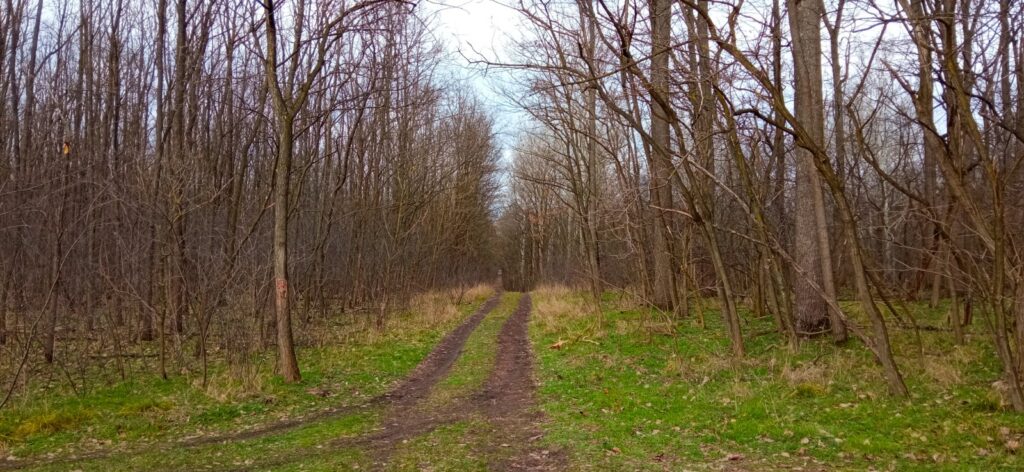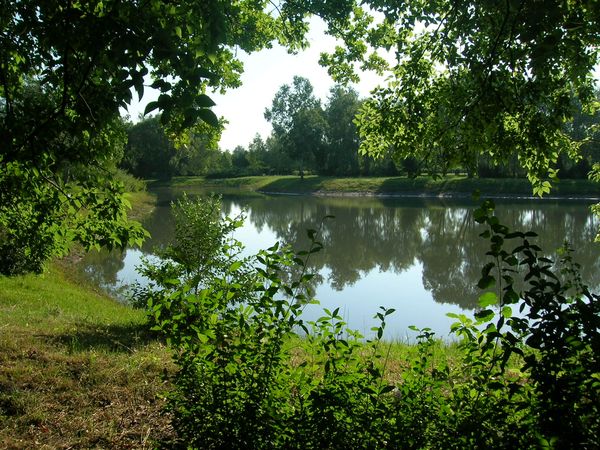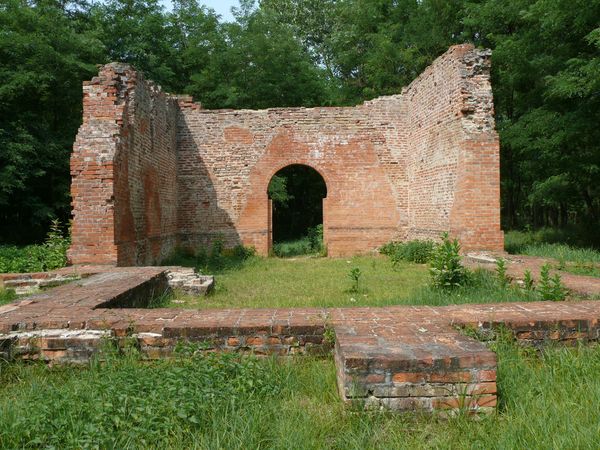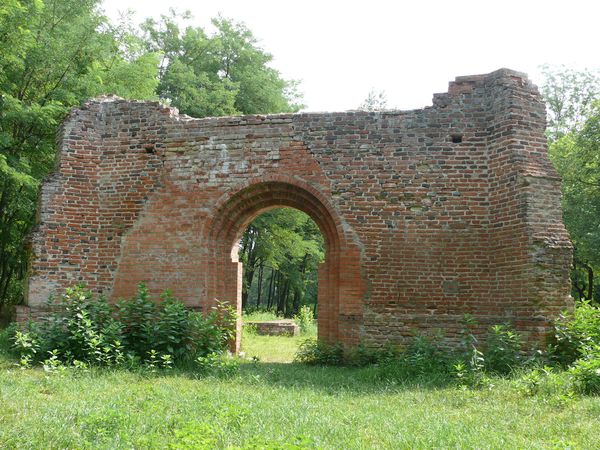With the arrival of Autumn comes a burst of colour, from the changing of the trees to oranges, reds, and shades of brown, and everything in between. Gone is the fierce heat of the summer, making outdoor excursions so much more pleasant. With temperatures around 15-20°C, it’s perfect weather for walking and cycling. Below are some fantastic autumn activities for all the family.

Botanical Garden of the University of Debrecen
While the Botanical Garden of the University of Debrecen shows its beautiful face in spring, the wilds of Autumn hold their own fascination. Where better to enjoy a color extravaganza than a Botanical Garden with plants from all around the world? Investigate the changing leaves of approximately 6,000 plant species are registered at the facility. The arboretum alone has more than 750 woody species in the garden, including the four cedar species known in the world today, there are special herbaceous and tropical collections, and one particularly special one, the so-called lily-of-the-valley oak. There are plenty of things to see and do while taking a pleasant Autumn walk outdoor at the Botanical Gardens.
Tip, if with a child. Why not collect some leaves for later identification!
While visiting the University, visit take time to enjoy the grandeur and history of the University of Debrecen.
- The main building of the University of Debrecen : The University of Debrecen is one of the most important research universities in Hungary. Its roots go back to the 16th century, as the Reformed College of Debrecen, founded in 1538, is considered its spiritual predecessor. The university’s imposing main building with a 100 years of eclectic-neo-baroque style, it is one of the most beautiful architectural monuments in Debrecen, which makes this an unmissable sight with the spacious French-style park in front of it.
- Statue of Mihály Fazekas and Sámuel Diószegi: In the Botanical Garden of the University of Debrecen, in a small clearing, there is a joint sculpture by Mihály Fazekas and Sámuel Diószegi, the two authors of the Hungarian Herbal Book published in 1807, by sculptor Ede Kallós. Behind the statue is a hundred-year-old pedunculate oak of magnificent size.
- Agóra Science Experience Center: The modern building of the Adventure Center , which opened in 2014 in the area of the botanical garden, has a contrasting effect to the nearby Great Forest environment, but its designers designed it to be in organic harmony with the botanical garden. in which not only the light is filtered in, but also the sight of the surrounding nature. Only the 24-meter-high dome of the observatory and the associated stair tower stand out from the building, which is constructed with modern architectural solutions.
Accessibility: From the center of Debrecen by tram 1 to the University stop, from where you can walk to the entrance to the botanical garden (behind the building of the Life Sciences Center of the University of Debrecen).
Useful information:
The outdoor arboretum of the botanical garden can be visited every day from 8 am to 4 pm until March 20th, and from March 21st from 8 am to 6 pm for the purchase of a ticket, in addition to keeping the rules of distance and wearing a mask.
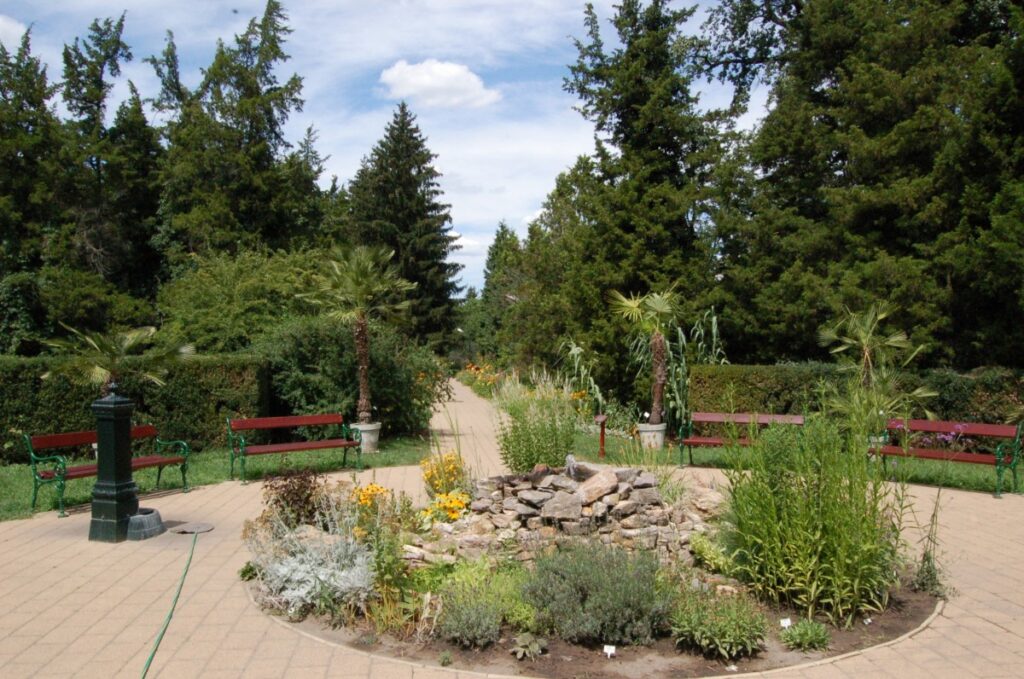
Walk in the Pallag forest
Pallag is one of the outer parts of Debrecen, just a few kilometers from the heart of Debrecen. The settlement has retained its original name of old, although the spelling has changed slightly, “Parlag”, which was mentioned as a village in a written document as early as the beginning of the 13th century.
In the 16th century it was a village of 30-40 plots, then by the second half of the 17th century it was depopulated and taken over by the city of Debrecen. Until the 1850s, a tap also stood here. Starting from the Great Forest on a pleasant forest walk, following a marked hiking trail
We can reach the settlement on foot in one hour and on the bike in less than half an hour, which is known today from the Balásházy Agricultural Vocational High School, the Debrecen Football Academy, and the Debrecen International School. At the end of the tour, relax in the garden area of the local pub or on the terrace of the Pallag Spájz bakery for refreshments. You can get back to Debrecen on the same route or by long-distance bus back or through the forest.
Attractions concerned:
- Balásházy Agricultural Vocational High School: This school resides in a bulding that was the Royal Hungarian Academy of Economics, which opened in 1901. The patinated building and ornamental garden of the academy, which still stands today, is the main decoration of the settlement. The famous students of the Academy were Wass Albert, a Transylvanian writer and poet, and István Fekete, a writer.
- Debrecen Football Academy: The training center is located in Pallag, on an area of 13 hectares provided by the University of Debrecen. The nearly 2,000-square-foot modern sports complex was handed over on April 27th, 2013 in a ceremonial setting. Its purpose is to educate youth youth. There are tracks of different sizes and playgrounds in the academy area.
- Debrecen International School: The school located next to the Debrecen Football Academy opened its doors in 2019. The building of the Debrecen International School (ISD), designed by Bord Architect Studio, was chosen as one of the best architectural works in the world in the A’Design Award 2019-2020 international design competition.
Accessibility: From the center of Debrecen by tram 1 to the Klinikat stop, then on foot on the forest path running parallel to Pallagi út on the hiking trail marked with a red cross or from Kossuth utca with the trolleybus 3 passing through the forest on a hiking trail marked with a red cross.
Useful information: Wild animals (deer, wild boar) still occur in the Pallag forest, so it is worth finishing the hike before dark. Comfortable, waterproof shoes and clothing are recommended. It is only possible to see the affected sights and buildings from the outside.
Hike in the Erdőspuszta
The Erdőspuszta stretches in a semicircle about ten kilometers east of Debrecen. It is a popular excursion destination, a cycling and hiking center with fabulous forest hiking trails, tree-lined lookouts, sparkling lakes, diverse flora and fauna, and beautiful natural surroundings. The lily-of-the-valley oaks are found in smaller or larger patches. The area’s rich birdlife is stunning, but wild boar, deer, rabbit, and fox are also common in this area. Scented pine forests alternate with meadows dotted with woodland patches and wildflowers. From early spring to late autumn, the hiker can return home with many botanical experiences.
The popular tourist attraction of Erdőspuszta is the 138-year-old “Zsuzsi”, the oldest narrow-gauge forest railway in Hungary, which has been running through the picturesque landscapes of the Erdőspuszta around Debrecen since its opening in 1882. There are also bike paths and forest hiking trails on the trail, so you can go on foot or on two wheels to discover the wonderful wildlife of the area. On the way, it is worth stopping at the Csereerdő stop of the small railway and roaming the area, where in addition to natural wonders we can also find ancient monuments, but at the terminus of the Zsuzsi train, in Hármashegyalja, there are also many natural and built attractions.
Attractions concerned:
- Starting point of the Zsuzsi Forest Railway : The Zsuzsi Forest Railway, Hungary’s oldest, operating small railway, east of the “heart” of Debrecen, adventures its passengers with an unparalleled experience, adventuring in the picturesque landscapes of the Erdőspuszta. The first section of the 138-year-old light rail was opened in 1882. Initially, two locomotives were operated, the 107 HP wood-fired locomotive with track number I was given the name Zsuzsi, which it still prides itself on today. At the Ruyter Street departure station of the Zsuzsi train, many monuments can be seen, including the most patinated locomotive, the Zsuzsi steamer manufactured in 1923, and the Nagyfűtőház and Kismotorszín, built in the 1920s.
- Nagycserei resting forest: Nagycsere settlement is located east of Debrecen, on the north side of road 48, which is famous for the “Nagycserei Kőrises” arboretum. The soul of the forest consists of an old oak-ash-elm grove, in the deeper parts of which the Hungarian ash predominates. This “grove” is one of the most beautiful in Nyírség. The arboretum is known as the “Pál Szabó Memorial Forest” by foresters, in memory of the founder Pál Szabó, was a forester, thus the monument is made of wood.
- Ördögárok: On the western edge of the Erdőspuszták, on the line of the Zsuzsi Forest Railway, near the Csereerdő stop, there is one of the reconstructed remnants of the Ördögárok rampart system, which is a demonstration site. The Ördögárok (Csörsz árka) is an ancient fortification system in the northern and eastern parts of Hungary. There are wooden poles pointed in the 2-3 meter deep ditch and a wicker hedge runs along the top of the accumulated embankment. The fortified rampart was built by the Sarmatian tribes settled in the Great Plain and then used by the Romans as limes.
- Hármashegyalja: At the terminus of the Zsuzsi Forest Railway, in Hármashegyalja, a wonderful forest environment, educational trails, a fishpond, a lookout tower, a playground and a picnic area await nature lovers. At the highest point of the excursion site is a 25-meter-high lookout tower, which offers an unparalleled view of the surrounding forests, the natural and cultural values of which can be better explored on a forest study trail.
Accessibility:
From the starting station of the Zsuzsi train on Ruyter Street on the railway route on road 48 towards Vámospércs to the Csereerdő stop or the Hármashegyalja terminus.
Useful information:
The Zsuzsi Forest Railway is open until the end of September. There are still wild animals (deer, wild boar) in the area of Erdőspuszta, so it is worth finishing the tour before dark. Comfortable, waterproof shoes and clothing are recommended.
Take a Tour of the ruins of Fancsika
One of the most popular excursions in Debrecen’s Erdőspuszta is visiting the ruins of Fancsika, where fishponds, lookouts, picnic places, hiking trails, a country house, an arboretum are located, and of course a beautiful natural environment awaits visitors. The name Fancsikai originates from the village of Fancsika which was lived in during the Árpádian period and is where our ancestors began to settle at the beginning of the 12th century. In the 1550s, more than two hundred people lived here, but in 1574 the Turks destroyed the settlement. The remains of the former village are still visible in the ruins of a medieval church, which is one of the popular destinations for excursions in the area. It is worth visiting Fancsika by bus or car, then you can continue the tour on foot.
Attractions concerned:
- Fancsikai Lakes: The Fancsikai Lakes were established in the 1970s for reservoir and fishing. To this day, it is a popular place for hiking and relaxation with picnic areas and fishing opportunities. The dams of the lakes are easy to walk around and open to the public. It is an important nesting place for many protected bird species, such as ducks, grebes, herons, and herons, making it a popular destination for nature photographers as well.
- Bánki Recreation Center: In the building corresponding to the natural image of Erdőspuszta, the Erdőspuszta Country House was opened in 1982 in the area of the Bánki Recreation Center, in the exhibitions you can learn about the wildlife of the area. In addition to the country house, there is a herb garden, arboretum, educational trail and playground for further exploration. The 15-hectare herb garden consists mainly of a collection of trees, deciduous, pine and shrubs, and when it was established in 1978, 1,200 seedlings of pine, deciduous and shrub were planted. The arboretum was established in 1989. Thanks to its protected environment, we can find not only carefully maintained diverse vegetation, but also rich insect and bird life, as well as smaller vertebrates, mammals and amphibians.
- Fancsikai church ruins: The church of Fancsika, the Árpádian village was founded on a sandy hill known as Templomhegy, this was in the 1920s and was privately owned. Excavations in the area proved that the church, cemetery and inner plots of the village were located on a large sand hill south of Diószegi út. According to historians, the church stood as early as the middle of the 12th century. This was confirmed by the fact that from the already uprooted graves II. Royal coinage from the time of Béla (1172-1196) was found here.
Accessibility: From Debrecen by car on road 48 towards Vámospércs, then to the right of the sign pointing in the direction of the Fancsika lakes.
Useful information:
The Erdőspuszta Demonstration House is not currently available, but the Arboretum can be visited from 9 am to 4 pm. Comfortable, waterproof shoes and clothing are recommended for the forest hike.
Excursion in the Gúthi forest
Nyíracsád, 34 km from Debrecen, and Gúthpuszta in its area were formerly the destination of the Zsuzsi Forest Railway when the forest was still used for logging. Here, north of Nyíracsád lies the largest contiguous forest block in the Great Plain, the Gúthi Forest. Although a significant part of it has already been replaced by acacia, some of the beautiful old stands of the former birch oak forests can still be seen today. These old oaks hide a rich birdlife and diverse flora. In addition to natural values, the forest also preserves a significant cultural and historical monument, the red-brick ruins of an Árpádian church. The area is also famous for its wildlife, especially its famous pair of fallow deer. The Gúthi Forest and the ruins of the church are ideal destinations for a pleasant autumn trip.
Affected attraction:
- Gúthi church ruins: A Romanian-style monastery dedicated to the Blessed Virgin was built in the 13th century in the Gút Forest on the border of Nyíradony. The remaining walls of the former single-nave church with a sacristy are divided by narrow window openings. The picturesque Pusztatemplom, located in a picturesque, wooded environment and with a romantic atmosphere in its ruins, is a popular destination for hikers.
Accessibility: From
Debrecen by car on the 471 road, or by long-distance bus, train to Nyíradony, then from there on foot or by bicycle to Nyíracsád.
Excursion to the church ruins in Zelemér
The ruin of the church in Zelemér, located between Debrecen and Hajdúböszörmény, is one of the favorite excursion places of the locals. The medieval church offers a special sight at all times of the year and time of day. The church ruins of Zelemér can be reached on a comfortable walking or cycling tour.
The history of the church in Zelemér can be traced back to the reign of King St. Stephen when a decree was made for every tenth village to build a church. It was then that the original Romanesque church was built. During the Tartar invasion, the settlement became depopulated and the medieval church collapsed. Construction of the church, which can still be seen today, began around 1310. The sanctuary of the late Gothic, single-nave, half-octagonal buttress building may have survived from the former church. During the Turkish conquest, Zelem was looted and set on fire, and the stones of the church were almost completely carried away in the following centuries. Today, only eighteen meters of stumps from the church tower, which is about thirty meters high, and a small piece of the north wall of the church remain, which has been a monument since 1907. The ruins of the church and its surroundings have been completely renovated in recent years. The monument was surrounded by a fence of wooden columns, the site was landscaped, resting and cooking areas were created, and a 3-meter-high statue of St. Stephen was erected at the foot of the hill. The kunhalom mound on which the church is built has been protected as a site of local significance since 1981.
Accessibility: From
Debrecen city center, take tram 2 to Doberdó utca terminus, then walk north on Kartács utca following the yellow sign.

